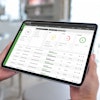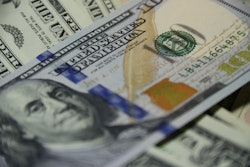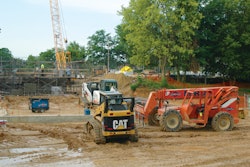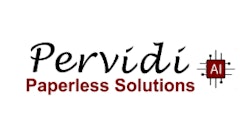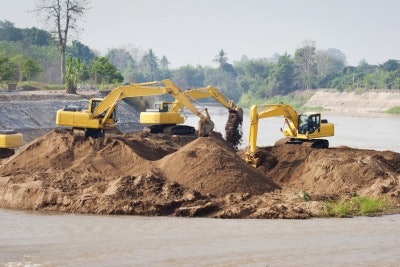
Contractors love equipment. Contractors also love being able to write off equipment purchases against their income taxes. Unfortunately, that love can lead to serious financial mistakes.
Don't think of your equipment as a store of wealth or a great way to reduce your taxes. Equipment is a productivity tool and it should be costed to projects accordingly.
The fact is that few contractors know their true equipment costs and even fewer know how to allocate those costs correctly. A well-designed equipment costing system charges projects for the full cost of the equipment each uses. Proper equipment costing leads to better selection of projects and to a profitably managed equipment fleet. Adoption of the techniques shared below will reduce your costs of construction by bringing to light wasteful equipment management practices.
Much to my surprise I recently discovered that we had never shared our recommended equipment costing methodology in a newsletter. It is one of the most important pieces of your job costing system.
You need to remember why you bought your equipment: the type of work you intended to use it for, what it cost to own, how long it should last and when to get rid of it. Most importantly: cost your equipment to the job!
Don't bury equipment costs in overhead. Charge projects for the hours the equipment was run to perform the work. That is the approach I am going to explain in detail. The cost ($ / motor hour) is referred to as the Effective Rental Rate. It enables you to easily determine whether you are better off renting the equipment you need or owning it.
Effective rental rates
Your effective rental rate should account for all the money you will spend on the equipment over its entire life. That means accounting for:
- Purchase price
- Financing charges
- Taxes
- Parts
- Fuel
- Overhauls
- Maintenance labor
- Shop costs (including rent)
- Outside repair services
An example will help you understand how to determine the proper effective rental rate for a piece of equipment.
Assume you bought an excavator that should last 10,000 motor hours if treated properly. You expect to run it 1,000 motor hours a year. The excavator should be
productive for the next 10 years (10,000 life hours / 1,000 annual hours).
You bought the excavator for $100,000 with an 8 percent sales tax and $20,000 in financing over the life of the loan. Your total capital cost is $128,000 ($100,000 x 1.08 +
20,000). Your hourly cost of purchase is $12.80 / motor hour ($128,000 divided by 10,000 hours).
Add up your annual costs for licensing, insurance and taxes then divide by the number of hours you expect to use the equipment this year (1,000 hours). Assume your
total fees for the three add up to $3,000. Your cost per motor hour for this piece is $3 / motor hour ($3,000 / 1,000 hours).
As your equipment runs, it burns fuel and wears down parts and fluids. The manufacturer should have provided you with a schedule for changing fluids, filters and other short-
lived miscellaneous parts based on running motor hours. You need to account for these costs. For example, assume your excavator burns 8 gallons per hour based on typical
usage. Your fuel costs $3.00 per gallon, which converts to $24 / motor hour.
Assume you have to change fluids every 100 hours and those fluids cost $100 per change including labor. The fluids add another $1 / motor hour. The same approach
applies to miscellaneous parts and supplies like brakes, tires and filters. For our example, assume these contribute $0.50 / motor hour.
We need to address overhauls. Assume that the manufacturer has told you that your excavator's engine and drive train will need rebuilding after 7,000 hours. The factory
estimates the cost in mechanic's labor and parts will be $10,000. That just added a $1.00 / motor hour major repair contribution ($10,000 / 10,000 hours).
One more item to address - shop overhead. If you have significant shop costs such as a large space, an on staff mechanic and a bunch of tools and equipment do not bury
the shop costs in overhead. Figure out how to charge them to each piece of equipment. If your entire equipment fleet averages 50,000 motor hours annually and the cost of repair
tools, shop building depreciation, shop supplies and mechanic's wages are expected to total $200,000, then $4 / motor hour ($200,000 / 50,000 motor hours) should be added
to the hourly rate for each piece of equipment.
Pulling it all together
Add together the individual hourly costs. That will give you the effective rental rate you should charge projects for the use of the excavator. Using our example, the
effective rental rate for your excavator should be $46.30 per motor-hour:
Cost Item $ / motor-hour
Cost of Purchase $12.80
Cost of Annual Ownership $3.00
Cost of Running the Excavator ($24+$1+$0.50) $25.50
Cost of Maintaining the Excavator ($1.00+$4.00) $5.00
Internal Rental Rate of Excavator $46.30
Tracking usage
Your major equipment comes with motor meters. Have the operator record the reading at the end of each day. If that proves difficult to enforce, have the operator
record the amount of time he used the equipment. Multiply that number by 0.9 to get a fairly reliable prediction of the actual motor hours.
Track Use to Control Equipment Costs
Equipment time cards should be turned in at the end of each day to the accounting staff for entry into the job costing system. A cost code labeled "indirect" should
be made available to the equipment operator. The indirect code allows the operator to assign time to a maintenance overhead account that isn't tied to a specific project.
Repair or replace
Knowing how to calculate effective rental rates eases your repair or replace decision. If purchasing new equipment would lower your effective rental rate on a
current piece of equipment then you should go ahead and replace it with new - assuming you are in a financial position to secure the loan or lease.


